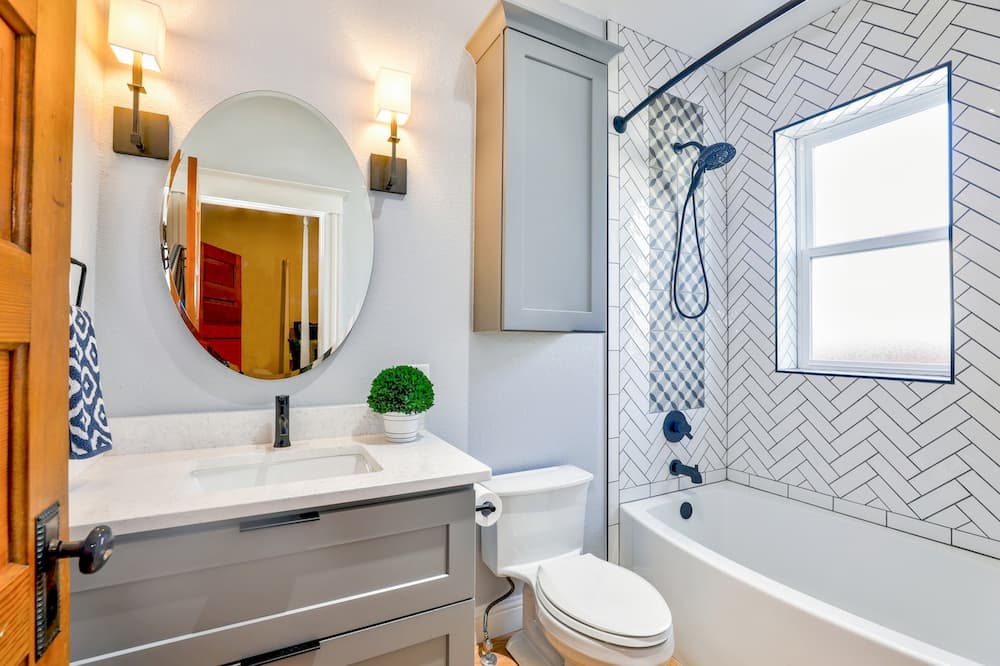Have you noticed your water bill creeping higher each month? It’s a common concern for homeowners who suddenly face unexpected costs. Most high water bills are caused by leaky toilets, dripping faucets, or outdated fixtures that waste water without you noticing.
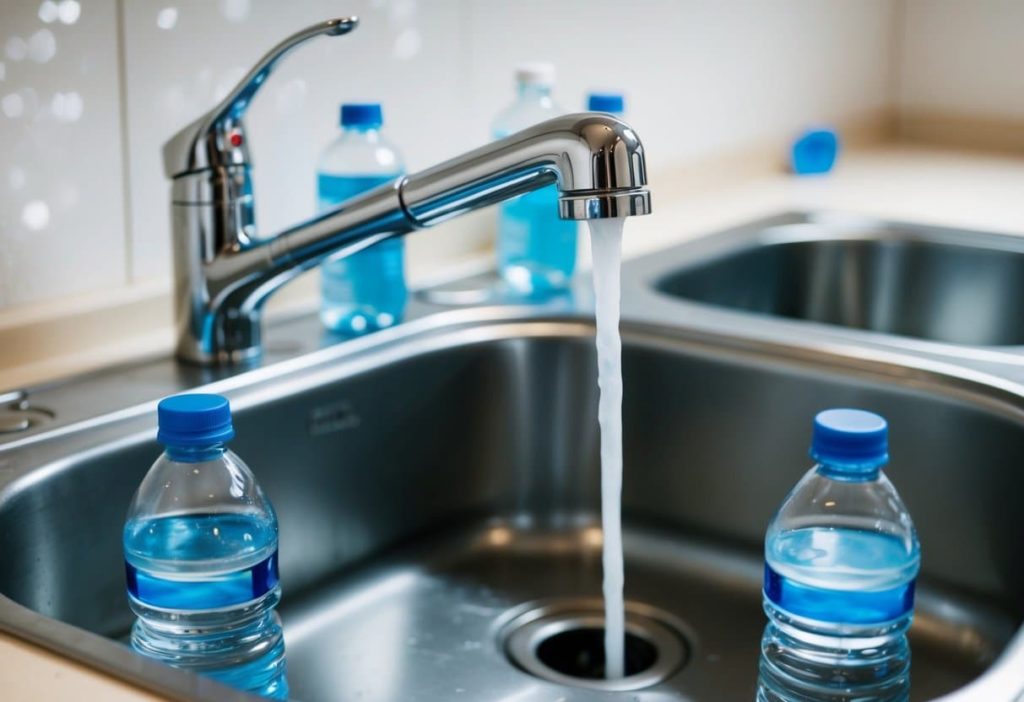
These silent culprits can waste thousands of gallons monthly. A single running toilet can leak up to 200 gallons per day—that’s 6,000 gallons in a month! Dripping faucets add up too, with each drop contributing to your rising bill.
Seasonal changes might also impact your water usage. Summer lawn watering, filling pools, or having house guests can all increase consumption. Understanding these common causes helps homeowners identify and fix problems before the next bill arrives.
Surprised By A Spiking Water Bill? You’re Not Alone
Many homeowners experience shock when opening their monthly water bill, only to find an unexpected spike in charges. This surprise is quite common across households nationwide.
The average American family uses about 300 gallons of water daily, but a single leaking toilet can waste up to 200 gallons per day without anyone noticing. Such hidden leaks often cause those mysterious bill increases.
Weather changes can also impact water usage. During summer months, lawn irrigation alone can account for 50-70% of a household’s water consumption.
Common causes of high water bills include:
- Undetected leaks in pipes or fixtures
- Seasonal changes in water usage
- Faulty water meters
- Recent rate increases by local utilities
- Inefficient appliances and fixtures
A family in Phoenix recently discovered their water bill had tripled. The culprit? A silent toilet leak that had been running for weeks.
Water bills provide valuable information beyond just the amount due. They typically show usage history, which helps identify unusual consumption patterns before they become expensive problems.
Professional plumbers can conduct water audits to pinpoint exactly where water might be wasted in a home. These inspections often reveal issues homeowners would never spot themselves.
Smart water monitors now offer real-time tracking of water usage, alerting residents to potential leaks before they appear on the monthly water bill.
Top Reasons Your Water Bill Might Be Higher Than Usual
Unexpected spikes in your water bill often point to specific problems around your home that need attention. Finding and fixing these issues quickly can save both water and money.
Leaky Fixtures You Haven’t Noticed Yet
Dripping faucets and showerheads waste surprising amounts of water. A single faucet dripping once per second wastes about 3,000 gallons annually—that’s enough to fill a small swimming pool!
These leaks often start small. You might notice a faucet that doesn’t fully shut off or a showerhead that drips after use. Even small leaks add up quickly on your bill.
Quick test: Place a dry cup under suspected dripping fixtures overnight. If water collects by morning, you’ve found a culprit.
Worn-out washers and O-rings are common causes. These inexpensive parts deteriorate over time but are relatively simple to replace.
Cracked Or Damaged Pipes (Even Underground Ones)
Hidden pipe damage can silently waste thousands of gallons. Underground leaks may go undetected for months while steadily increasing water bills.
Warning signs include:
- Unexplained wet spots in the yard
- Areas of unusually lush grass
- The sound of running water when no fixtures are in use
- A water meter that keeps turning even when all water is off
Foundation cracks or shifting soil can damage pipes over time. Older homes with galvanized or copper piping are particularly susceptible to corrosion and pinhole leaks.
Professional plumbers use specialized equipment like acoustic detectors to locate underground leaks without extensive digging.
Faulty Toilets Or Worn-Out Flush Valves
Toilets account for nearly 30% of an average home’s indoor water consumption. A single leaking toilet can waste up to 200 gallons daily—that’s 6,000 gallons monthly!
Common toilet problems:
- Worn flapper valves that don’t seal properly
- Misadjusted or broken fill valves that cause constant refilling
- Cracked overflow tubes
The dye test helps identify leaks: drop food coloring in the tank and wait 15 minutes without flushing. If color appears in the bowl, you have a leak.
Many toilet parts wear out gradually, so problems develop slowly. Regular maintenance checks prevent small issues from becoming expensive ones.
Irrigation System Problems
Outdoor watering systems often cause dramatic increases in water usage. A single broken sprinkler head can waste 25 gallons in just 10 minutes.
Buried irrigation lines can develop leaks from root intrusion, freeze damage, or simple aging. Since these systems typically run early morning or evening, leaks may go unnoticed for weeks.
Irrigation checklist:
- Inspect for broken sprinkler heads
- Look for soggy areas or unusually green patches
- Check for water pooling on hardscapes
- Verify timer settings aren’t excessive
Smart irrigation controllers that adjust based on weather conditions can reduce outdoor water usage by 15-30% compared to traditional timers.
High-Usage Appliances And Aging Fixtures
Older appliances typically use significantly more water than newer, efficient models. A pre-2000 washing machine might use 40-45 gallons per load, while newer ENERGY STAR models use as little as 14 gallons.
Water heaters can also contribute to high bills if they develop leaks. Check around the base of your water heater for moisture or corrosion.
High-water appliances to monitor:
- Washing machines
- Dishwashers
- Water softeners (especially those that backwash frequently)
Consider upgrading to low-flow fixtures. Modern low-flow showerheads use 2 gallons per minute versus older models’ 5-8 gallons, without sacrificing water pressure.
Seasonal Spikes Or Lifestyle Changes
Water usage naturally fluctuates throughout the year. Summer months typically show increased consumption due to lawn watering, garden maintenance, and filling pools.
Recent lifestyle changes might explain the bill increases. New family members, extended houseguests, or spending more time at home all increase water consumption.
Common seasonal factors:
- Summer lawn and garden care
- Pool filling and maintenance
- More frequent showers during hot weather
- Children are home during school breaks
Compare your current bill with the same period last year rather than the previous month for a more accurate assessment of unusual increases.
Tracking daily habits helps identify water waste. Even small changes like shorter showers or full dishwasher loads instead of hand washing can significantly reduce consumption.
Quick Checks You Can Do Today
High water bills often sneak up on homeowners. Here are some simple checks anyone can perform to identify potential problems.
First, check all toilets for silent leaks. Put a few drops of food coloring in the tank and wait 15 minutes without flushing. If color appears in the bowl, a leak exists.
Examine faucets and showerheads closely. Even small drips add up surprisingly fast – a single dripping faucet can waste 3,000 gallons annually.
Look under sinks and around appliances for moisture or water stains. These telltale signs often indicate a leaky pipe that needs immediate attention.
Simple Water Usage Test:
- Record your water meter reading
- Avoid using water for 2 hours
- Check the meter again
- If numbers changed without water use, you likely have a leak
Inspect your water heater for puddles or corrosion. These issues signal potential failures that waste water and energy.
Check outdoor spigots and irrigation systems for leaks. Garden hoses left on can waste thousands of gallons without notice.
Review recent changes in household habits. More people showering, new water-using appliances, or seasonal activities like filling pools can dramatically increase usage.
Remember that visible signs represent only part of the problem. Many serious leaks hide behind walls or underground where professional detection becomes necessary.
What Most Homeowners Miss
Many homeowners overlook crucial factors that contribute to high water bills. Hidden leaks often lurk behind walls or underground, silently wasting gallons daily without any visible signs.
Toilet leaks rank among the most common culprits. A single faulty flapper can waste up to 200 gallons per day! To check for toilet leaks, place a few drops of food coloring in the tank and wait 15 minutes without flushing. If color appears in the bowl, you’ve got a leak.
Outdoor irrigation systems frequently develop problems. Broken sprinkler heads or damaged lines can pour water directly into the ground unnoticed for weeks.
Water meters tell important stories that homeowners rarely read. Check your meter before and after a two-hour period when no water is being used. Any movement indicates a leak somewhere in your system.
Seasonal changes affect water usage more than people realize:
| Season | Common Issues |
|---|---|
| Summer | Increased lawn watering, pool filling |
| Winter | Holiday guests, dripping faucets to prevent freezing |
| Spring | Power washing, garden preparation |
Old fixtures waste significant amounts of water. Pre-1992 toilets use 3.5+ gallons per flush compared to modern 1.28-gallon models.
Water pressure that’s too high (above 60 psi) forces more water through every fixture in your home. Installing a pressure regulator can reduce consumption by 30%.
When It’s Time To Call A Plumber
Not every water issue needs professional help, but some situations demand expert attention. Knowing when to make that call can save you from costly water damage.
Signs you need a plumber immediately:
- Water meter spinning when all fixtures are off
- Soggy patches in your yard
- Multiple clogged drains at once
- Water stains on walls or ceilings
- Unusually low water pressure throughout the home
If your water bill has doubled or tripled without explanation, professional help is warranted. This often indicates a hidden leak that DIY methods won’t resolve.
Persistent toilet running that doesn’t stop after adjusting the flapper valve requires professional assessment. The same applies to faucets that continue dripping despite replacing washers.
Cost vs. Benefit Analysis:
| DIY Attempt | Professional Solution |
|---|---|
| Temporary fixes | Permanent repairs |
| Risk of making it worse | Guaranteed results |
| Multiple store trips | One-time service call |
| Hours of your time | Typically resolved in 1-2 hours |
Strange noises in your plumbing system, like hammering or whistling, often indicate pressure problems that professionals can diagnose accurately.
Foul odors from drains might signal sewer line issues—something best left to experts with specialized equipment. Water discoloration also merits professional evaluation.
Remember, qualified plumbers identify problems quickly and implement lasting solutions. The right expert can transform your high water bill into reasonable monthly charges.
How Danika Plumbing Can Help
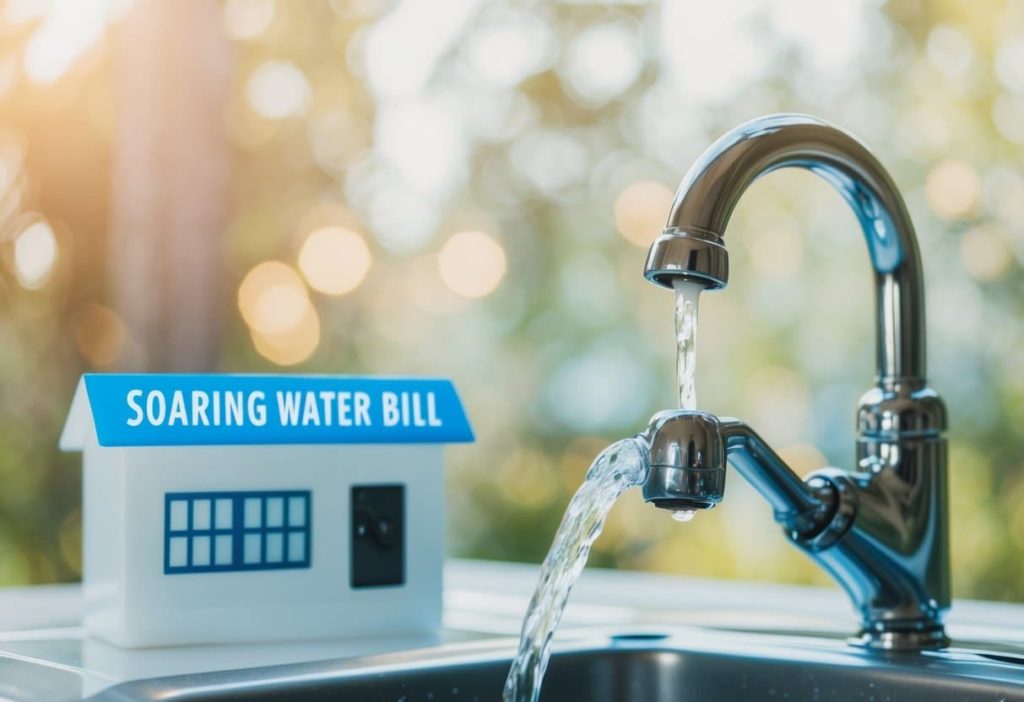
Danika Plumbing specializes in finding the root causes of high water bills. Their team of certified technicians can spot hidden leaks that most homeowners miss.
Frank Gaborik, owner and master plumber at Danika Plumbing, brings over 20 years of experience to every job. His team uses advanced leak detection equipment to identify problems without unnecessary wall or floor damage.
Danika Plumbing offers several key services to address high water bills:
- Comprehensive Water Audits – Detailed inspection of all plumbing fixtures
- Leak Detection – Finding hidden leaks in walls, floors, and underground pipes
- Fixture Replacement – Installing modern, water-efficient toilets and faucets
- Pipe Repair – Fixing or replacing damaged pipes causing water waste
- Water Pressure Adjustment – Setting optimal pressure levels to prevent waste
Their technicians arrive promptly in fully-stocked vehicles, ready to solve problems on the first visit. Danika Plumbing takes pride in clear explanations of all issues found.
Most water bill problems can be fixed within a single day. The company provides upfront pricing with no surprise fees, and all work comes with a satisfaction guarantee.
Customers appreciate the mess-free service. Technicians use protective coverings for floors and furniture during all repairs.
To schedule a water bill assessment, homeowners can call Danika Plumbing’s office for same-week appointments.
Tips To Keep Your Water Bill In Check Year-Round
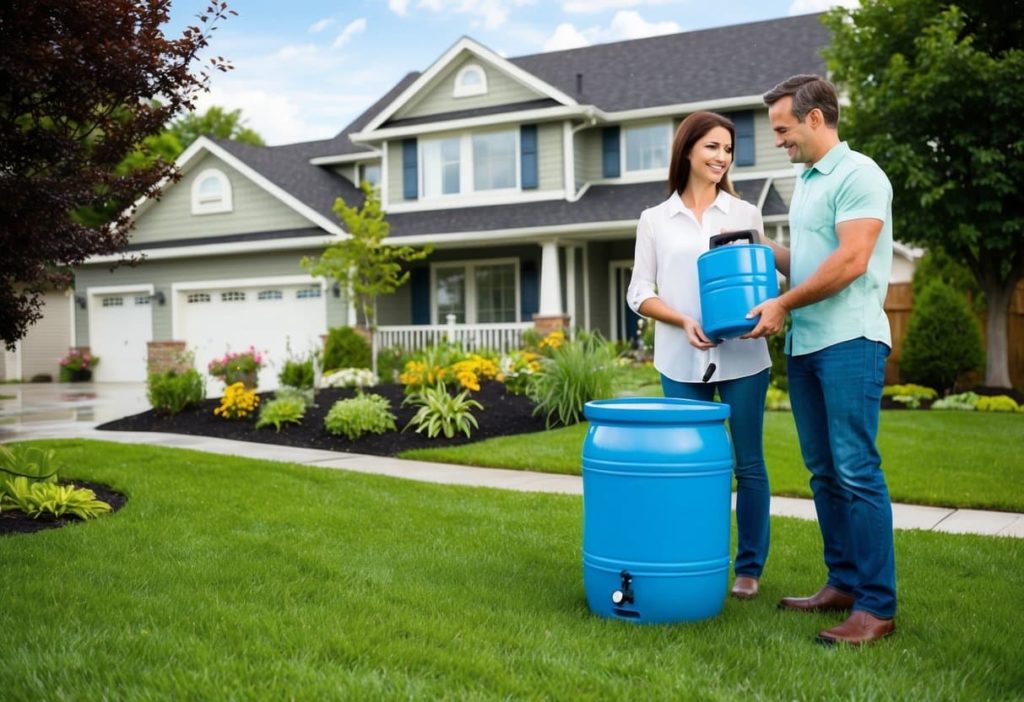
Water bills can surprise homeowners with unexpected costs. Fortunately, several practical steps can help manage these expenses throughout the year.
Fix leaks immediately. A dripping faucet wastes up to 3,000 gallons annually. Toilet leaks can waste even more—check by adding food coloring to the tank and watching if it seeps into the bowl without flushing.
Install water-efficient fixtures to reduce consumption. Look for WaterSense-labeled products that use at least 20% less water than standard models.
Modify daily habits to conserve water:
- Take shorter showers (5 minutes or less)
- Turn off taps while brushing teeth or shaving
- Run dishwashers and washing machines only when full
- Water lawns during early morning or evening hours
Many utility companies raise their water and sewer rates annually. Being aware of these scheduled increases helps in planning your budget accordingly.
Understanding your bill makes a difference. Most water bills include both water usage and sewer charges. Sewer charges are typically calculated based on water consumption, so reducing water use lowers both portions of your bill.
Consider installing a rain barrel to collect water for gardening. This simple step can save hundreds of gallons during growing seasons.
Monitor usage patterns with smart water meters if available in your area. They help identify unusual consumption before it becomes a major expense.
Final Word: High Water Bills Aren’t Inevitable
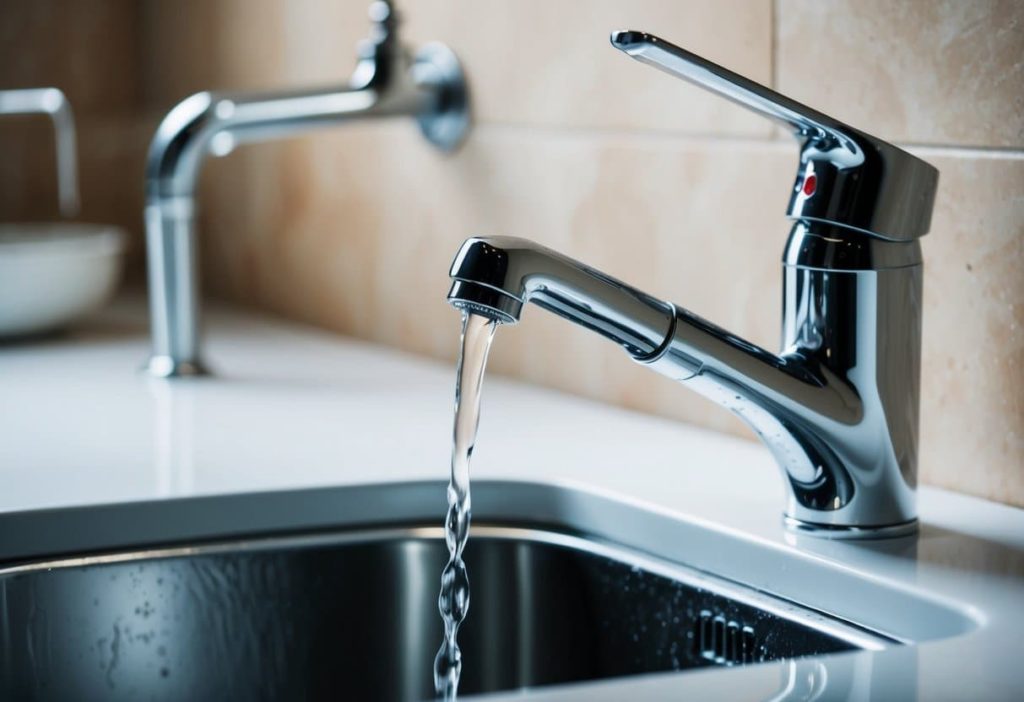
High water bills don’t have to be a monthly shock. With some attention and smart habits, homeowners can significantly reduce their water costs.
Modern plumbing fixtures like low-flow toilets and efficient shower heads can cut water usage by 20-30%. These investments typically pay for themselves within a year.
Regular maintenance prevents the silent leaks that drive bills skyward. A professional inspection once yearly can identify problems before they inflate costs beyond the rate of inflation.
Economic factors matter too. Water rates often rise faster than the consumer price index, putting pressure on urban wage earners. In many cities, water rates have increased 40% over the past decade.
Consider these quick fixes:
- Fix dripping faucets immediately
- Run dishwashers and washing machines only when full
- Install rain barrels for garden watering
- Update toilet flappers every 2-3 years
Many water utilities offer free conservation kits and rebates for efficient appliances. These programs exist specifically to help customers manage rising costs.
Remember that water conservation isn’t just financially smart—it’s environmentally responsible. Each gallon saved reduces energy used for treatment and delivery.
With thoughtful usage and timely repairs, that dreaded high water bill can become a thing of the past.
Frequently Asked Questions
Water bill concerns are common among homeowners and renters alike. Here are answers to the most pressing questions about unexpectedly high water charges.
What could be causing a sudden increase in my water bill?
Several factors might trigger a sudden spike in your water bill. Running toilets often waste up to 200 gallons daily without being noticed.
Dripping faucets add up quickly – even slow drips can waste 20 gallons per day.
Recent changes in household size, such as visitors staying for extended periods, naturally increase water consumption.
How can an undetected leak affect my water bill?
Undetected leaks can dramatically impact water bills while remaining completely hidden. Underground pipe leaks might only show signs through unexplained wet spots in the yard or unusual water meter activity.
Small pipe leaks inside walls can waste thousands of gallons before causing visible damage. A professional plumber can perform leak detection tests to identify these hidden culprits.
What are the common reasons for water bills to increase significantly within an apartment setting?
Apartment dwellers face unique water billing challenges. Faulty shared plumbing systems may attribute neighboring usage to your unit.
Some apartment complexes use allocation billing, which divides total building water usage among tenants regardless of individual consumption.
Older apartment fixtures like toilets and showerheads often use more water than modern, efficient models.
How can seasonal changes impact my water bill?
Seasonal factors significantly influence water consumption patterns. Summer months typically show increased usage for lawn watering, garden maintenance, and filling pools.
Winter can bring unexpected increases due to burst pipes during freezes or holiday guests increasing household water demands.
Some municipalities adjust water rates seasonally, charging premium prices during high-demand periods.
What options do I have for challenging an unexpectedly high water bill?
Customers have several avenues to dispute excessive water bills. Request a meter accuracy test from your water provider if you suspect faulty equipment.
Most utility companies offer bill adjustment programs for one-time leaks if properly documented with repair receipts.
Consider hiring an independent plumber to document any issues that might support your claim with the water authority.
What is generally considered to be an excessive amount for a monthly water bill?
Water bill averages vary widely by location and household size. The typical American family uses approximately 300 gallons daily, translating to $70-$100 monthly in most regions.
Bills exceeding 50% of your normal usage without explanation warrant investigation. Seasonal variations of 10-20% are common, but anything beyond deserves attention.
What is the average cost of a water bill in an average-sized Seattle home?
The average monthly water and sewer bill for a single-family home in Seattle is approximately $130 to $150, depending on usage and seasonal rates. (Need a Seattle Plumber?)
Water Charges
- Base Service Charge: For a standard 3/4″ residential meter, the monthly base charge is $20.45.Seattle
- Commodity Charges:
- Off-Peak (Sept 16 – May 15): $5.79 per CCF (1 CCF = 748 gallons).
- Peak Season (May 16 – Sept 15):
- First 10 CCF: $5.95 per CCF.
- Next 26 CCF: $7.36 per CCF.
- Over 36 CCF: $11.80 per CCF.
These rates are set by Seattle Public Utilities and are effective as of January 1, 2025 .
Sewer Charges
- Monthly Sewer Rate: King County sets the monthly sewer rate at $58.28 for single-family residences .
Example Monthly Bill
For a household using 8 CCF of water in a month during the off-peak season:
- Water Base Charge: $20.45
- Water Usage Charge: 8 CCF × $5.79 = $46.32
- Sewer Charge: $58.28
- Total: $20.45 + $46.32 + $58.28 = $125.05
Please note that actual bills may vary based on usage patterns, seasonal rates, and additional fees or taxes.
If you’re experiencing unusually high water bills, it might be due to leaks, inefficient fixtures, or other issues. Danika Plumbing offers professional inspections and solutions to help you manage your water usage effectively.
